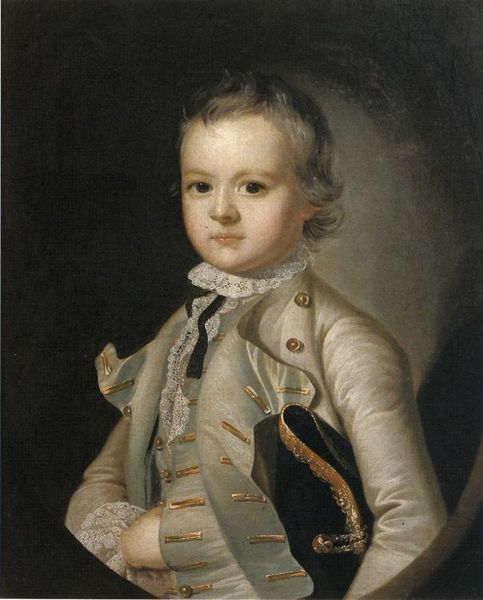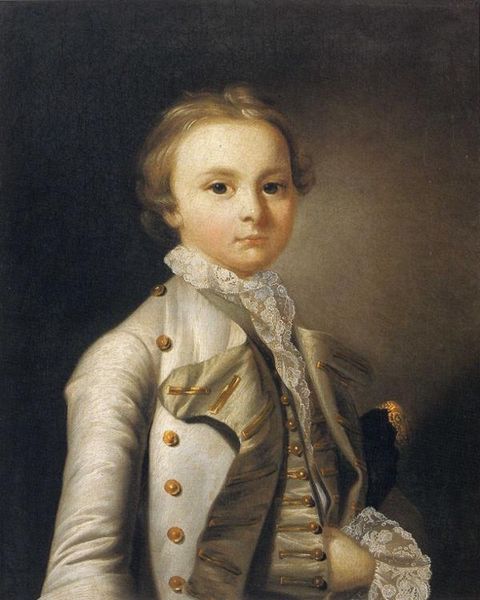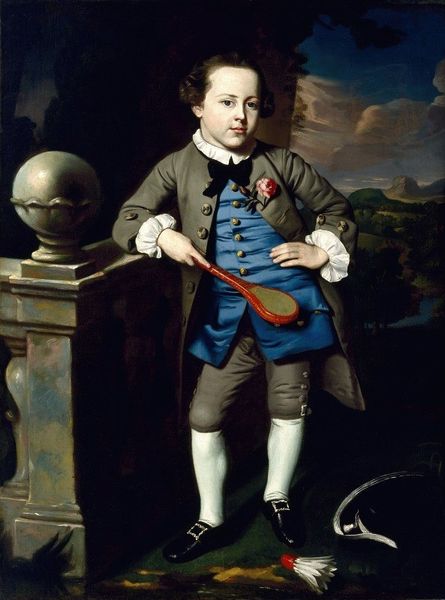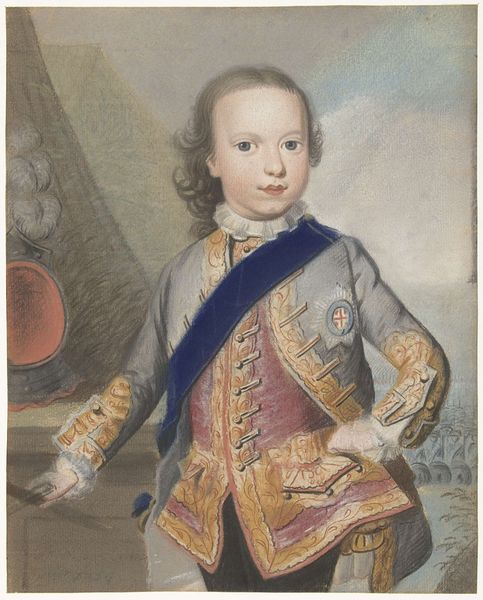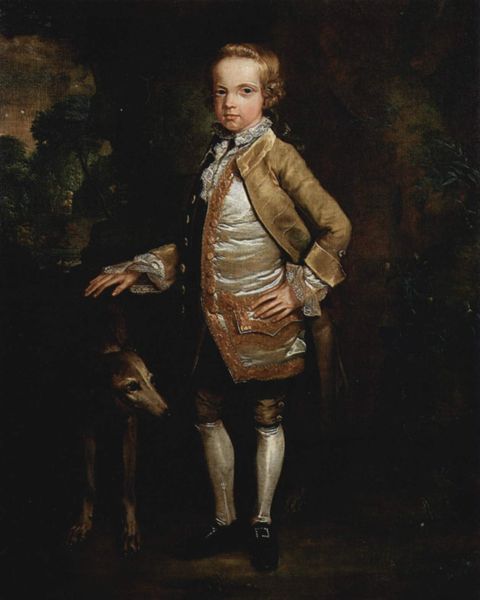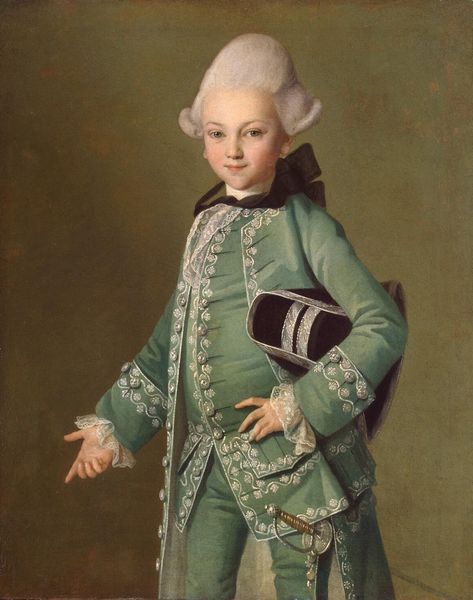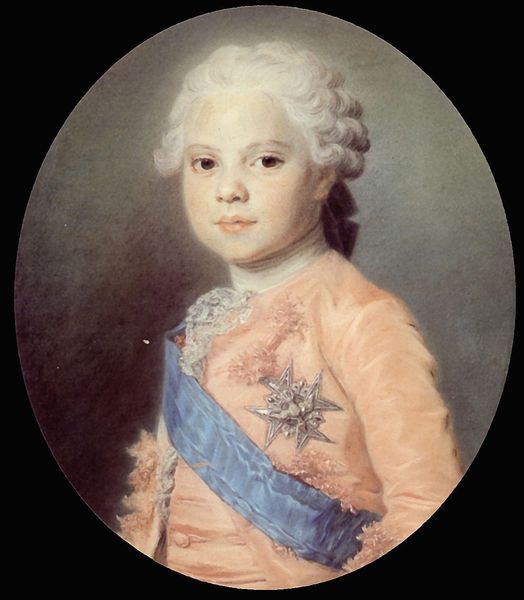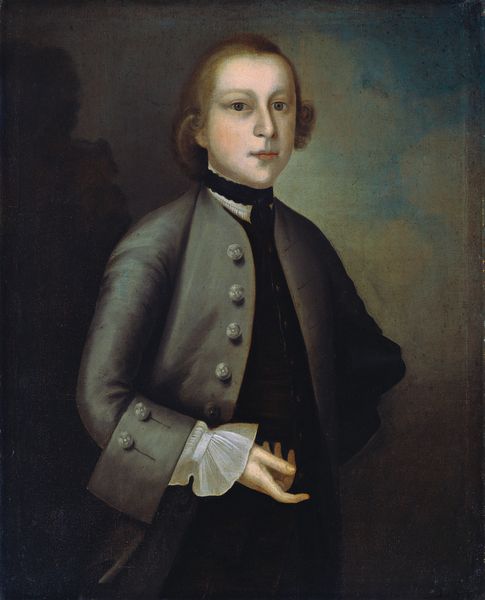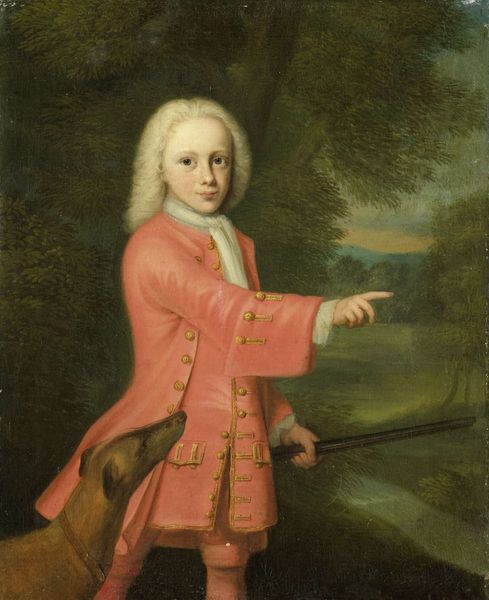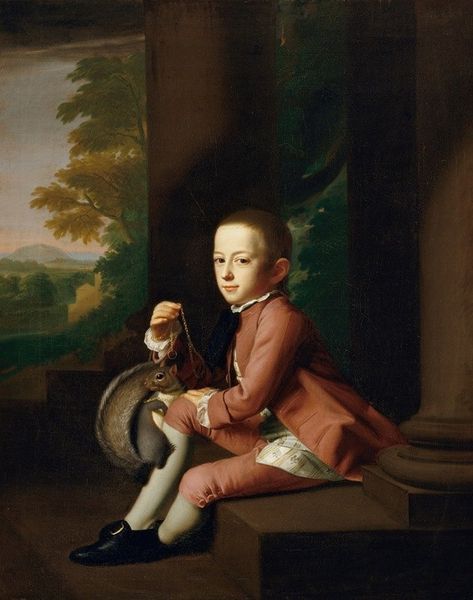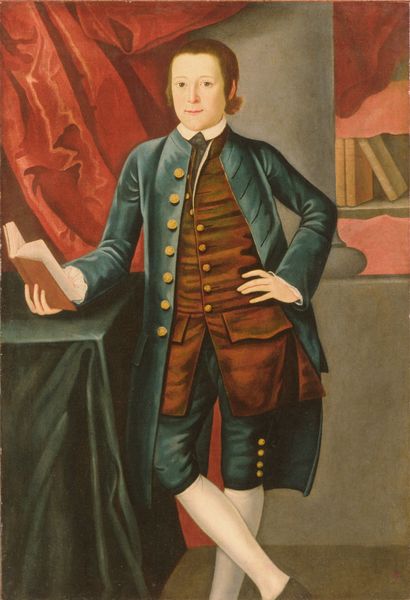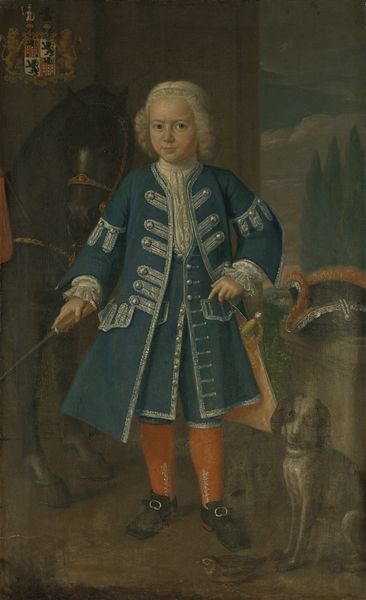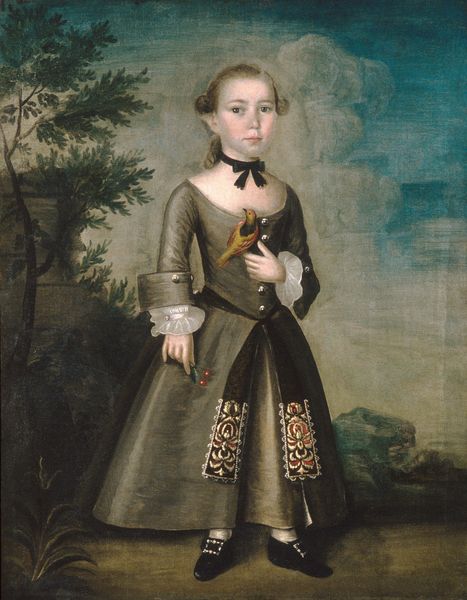
painting, oil-paint
#
portrait
#
portrait
#
painting
#
oil-paint
#
genre-painting
#
academic-art
#
rococo
Copyright: Public Domain: Artvee
Editor: Here we have "Jonathan Mountfort," an oil painting dating back to around 1753 by John Singleton Copley. I'm struck by the almost theatrical staging – the child with the floral garland seems very self-consciously posed. How do you read this portrait in its historical context? Curator: Well, it's fascinating to consider how portraits like this one functioned within the socio-political landscape of the time. Notice the boy's clothing, his pose. This wasn't simply about capturing a likeness; it was about constructing an image of gentility and social standing. Portraits like these reinforced the power structures of the elite. Does the somewhat artificial quality perhaps strike you as indicative of this staged reality? Editor: Yes, I see what you mean. It's interesting that you highlight the "constructed image." Were these commissioned portraits always aimed at solidifying the family’s social position? Curator: Almost invariably. Think about the spaces where these paintings would have been displayed – private homes, serving as a kind of visual propaganda to visitors. Copley, even at this relatively early stage in his career, understood the power of portraiture as a social and political tool. This carefully curated image conveyed not just identity, but also a specific set of values and aspirations. But what do you think that flower crown in particular might symbolize in this social theater? Editor: I guess innocence, perhaps even a link to nature in a sort of aristocratic pastoral ideal? Curator: Precisely! And how that 'innocence' plays into notions of lineage and inherited privilege. Ultimately, appreciating a portrait like this necessitates understanding the visual language employed to communicate social power. Editor: I had not fully considered that context, but now I have a new appreciation of these paintings as social and even political declarations. Thanks! Curator: Indeed. It enriches our appreciation by contextualizing artwork within societal factors that are crucial for in-depth examination.
Comments
No comments
Be the first to comment and join the conversation on the ultimate creative platform.
